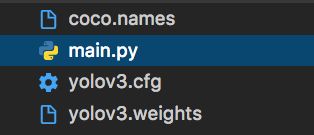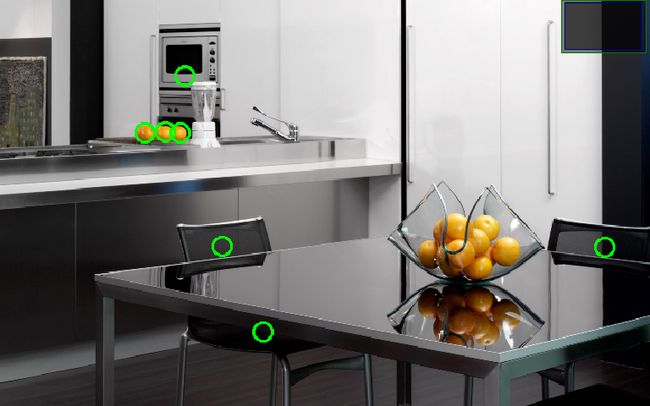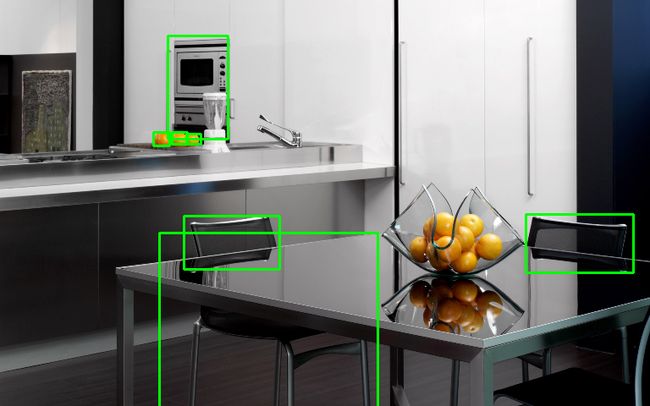import cv2
import numpy as np
net = cv2.dnn.readNet('yolov3.weights','yolov3.cfg')
可以在 dartnet 下载提供训练好的模型 yolov3.weights 和 yolov3.cfg
classes = []
with open("coco.names","r") as f:
classes =[line.strip() for line in f.readlines()]
print(classes)
coco.names 是分类文件名称文件,我们可以通过打印输出 cooc.names 名称来了解通过模型我们能够识别出的物体种类。
['person', 'bicycle', 'car', 'motorbike', 'aeroplane', 'bus', 'train', 'truck', 'boat',
layers_names = net.getLayerNames()
output_layers = [layers_names[i[0] - 1] for i in net.getUnconnectedOutLayers()]
blob = cv2.dnn.blobFromImage(img,0.00392,(416,416),(0,0,0),True,crop=False)
for b in blob:
for n, img_blob in enumerate(b):
cv2.imshow(str(n),img_blob)
将通过 blobFromImage 读取图片作为神经网络的输入,
def blobFromImage(image, scalefactor, size, mean, swapRB, crop, ddepth)
- 读取的图片
- 对图片值会乘以该指定数据 0.00392
- 输出图片的大小,也就是宽高
- 从通道中减去平均值的平均标量。
- swapRB 表示是否交互第一个或最后一个通道
- ddepth 表示输出带有景深通道,读取图片需要选择 CV_32F 或者 CV_8U
- crop: true 表示对比图片进行裁剪,false 表示是否裁剪和保持原有宽高比
- 返回值为一个 4 维矩阵(NCHW)
returns 4-dimensional Mat with NCHW dimensions order.
net.setInput(blob)
outs = net.forward(output_layers)
将 blob 作为神经网络的输入,然后 outs 接收向前传播作为输出
# print(outs)
# showing informations on the screen
for out in outs:
for detection in out:
scores = detection[5:]
class_id = np.argmax(scores)
confidence = scores[class_id]
if confidence > 0.5:
# objecte detected
center_x = int(detection[0] * width)
center_y = int(detection[1] * height)
w = int(detection[2] * width)
h = int(detection[3] * height)
net.setInput(blob)
outs = net.forward(output_layers)
print(outs)
从输出结果来看,输出 outs 是一个 list 前 4 位值分别为识别出物体中心坐标 x 和y 以及识别物体的大小也就是 w 和 h,不过这些都是比例值需要换算。
然后从第 5 开始就是检测物体对应每一个分类概率,我们可以通过 np.argmax 取最大也就是检测物体最可能类的概率值。从而得到该物体是什么物体。
cv2.circle(img,(center_x,center_y),10,(0,255,0),2)
接下来做的事就是把这些物体在图片中表示出来。
boxes.append([x,y,w,h])
confidences.append(float(confidence))
class_ids.append(class_id)
print(len(boxes))
7
number_objects_detected = len(boxes)
for i in range(len(boxes)):
x, y, w, h = boxes[i]
label = classes[class_ids[i]]
print(label)
chair
oven
chair
chair
orange
orange
orange
font = cv2.FONT_HERSHEY_SIMPLEX
number_objects_detected = len(boxes)
for i in range(len(boxes)):
x, y, w, h = boxes[i]
label = str(classes[class_ids[i]])
cv2.rectangle(img,(x,y),(x + w, y + h),(0,255,0),2)
cv2.putText(img,label,(x,y + 30), font, 1, (255,255,252),2)
print(label)




